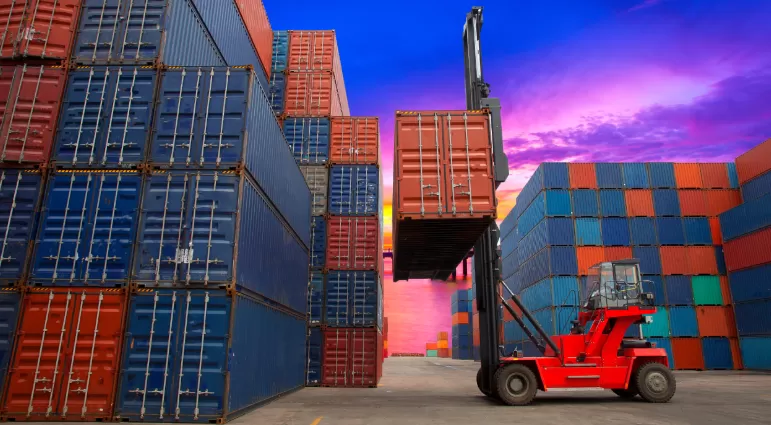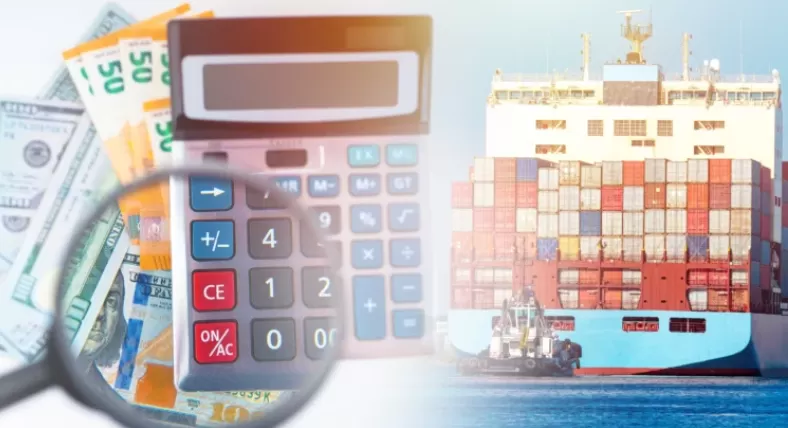This guide is written for procurement teams, small importers, Amazon FBA sellers, and freight managers who need clear, tactical answers: transit times, costing logic, routing to Milan, and how to choose the right service (sea / rail / air / express / hybrid). Here’s the thing — there’s no single “best” answer: the right choice depends on weight, volume, value, and how quickly you need the goods. I’ll walk you through those trade-offs and give concrete worked examples you can copy.
Quick snapshot — Which mode when
-
Express (courier): 1–3 days. Best for small samples (10 kg) or urgent parts.
-
Airfreight: ~3–7 days. Good for 100 kg or 200 kg batches where speed matters.
-
Rail (China→Europe): ~18–25 days. Strong middle ground for medium-value, less-urgent cargo.
-
Sea (FCL/LCL): ~25–45+ days. Cheapest per unit for large shipments (20', 40', 40'HC, 45'HC).
-
Sea+Truck : Sea to Italian port → truck to Milan. Cheaper than rail for some lanes, flexible.
-
Sea+Express: Sea to port + express final-mile for small parcels — cost-effective for small-volume retail.
(All transit ranges are typical — actual times depend on departure city, route, transits, and disruptions.)
1) Decision framework: pick by weight, volume, urgency, and value
Let’s break it down so you can choose in 30 seconds.
2) Modes in detail — what to expect
-
When to use: Bulk shipments where price per unit is the main driver.
-
Containers:
-
20' ≈ 33–37 CBM (usable) — common for dense cargo.
-
40' ≈ 67–76 CBM — standard for many shipments.
-
40'HC (high cube) gives ~10% more height → better for light-but-tall cargo.
-
45'HC gives marginally more volume — used for certain exporters/importers.
-
Port-to-port vs door-to-door: Port-to-port is cheaper; door-to-door includes inland trucking, customs, and delivery to Milan address (or FBA).
-
Transit: China (Shanghai / Ningbo / Shenzhen) → Genoa / La Spezia / Trieste → then inland trucking/rail to Milan. Typical sea transit: 25–45+ days.
Sea — LCL (Less-than-Container Load)
-
When: 1 CBM, 5 CBM, 10 CBM use cases. LCL charges by CBM or chargeable weight (whichever is greater).
-
Risks: More handling means slightly higher damage risk and longer consolidation times. Use for small batches or mixed-sku shipments.
-
How air charges: By chargeable weight = max(actual weight, volumetric weight). Volumetric (kg) = (Length × Width × Height in cm) / 6000 for air.
-
100 kg example: If space is tight (volumetric weight > actual), costs jump. Air is fast (~3–7 days door-to-door including customs) but expensive per kg.
-
200 kg case: Airlines may offer lower $/kg rates for higher weights, but routing (direct vs transhipment) affects timing.
-
10 kg: Ideal for urgent samples—door-to-door, simple paperwork, brokers handle customs.
-
120 kg: Still feasible via express but cost per kg drops slowly; at this weight you often compare express vs airfreight with courier consolidation.
Hybrid terms — explained
-
(sea + express): Sea from China to Italy port; express company clears customs and does final-mile parcel delivery. Good for small-volume retail where final-mile speed matters.
-
(sea + truck): Sea to port + trucking to final warehouse in Milan. Good for pallets and larger shipments aiming to minimize cost.
3) Milan-specific logistics — gateways and last-mile
Main gateway ports for Milan
-
Genoa: Historically the busiest for northern Italy — good trucking links to Milan (1–2 days).
-
La Spezia: Popular alternative depending on shipping line schedules.
-
Trieste: Northeast Italy, sometimes preferred for certain rail corridors.
Rail & inland yards
Last-mile considerations for Milan
-
Low Emission Zones (LEZ): Milan has restrictions for certain vehicles — check vehicle permits and time windows for delivery.
-
FBA deliveries: Book appointments early. Amazon warehouses may have tight acceptance windows and strict pallet/labeling rules. Consider using a forwarder experienced with EU FBA.
Here’s the practical difference you need to know.
-
Transit time:
-
Cost factors: Inland distance, road tolls, and local terminal handling often make Cologne slightly more expensive than Milan for shipments routed via southern European ports, but cheaper if you use northern port + efficient inland rail.
-
Choice rule: If your buyers/customers are in central/northern Europe, check total landed cost to Cologne vs Milan — sometimes shipping to Cologne (via Rotterdam/Hamburg + inland) is better for distribution.
5) Pricing anatomy
A freight quote has many line items. Here’s the anatomy:
-
Freight (ocean/air/rail/express charge).
-
Bunker Adjustment Factor (BAF) and Peak Season Surcharge (PSS) (variable).
-
Terminal Handling Charges (THC) at origin and destination.
-
Documentation & admin fees (AMS/ENS filing, manifest, BL issuance).
-
Customs duties (based on HS code and CIF value).
-
VAT (Italy generally 22% on CIF + Duty; Germany different rules).
-
Inland transport (port-to-door trucking / rail haul to Milan).
-
Insurance (recommended; often 0.3–0.5% of cargo value for All-Risk).
-
Misc: warehousing, demurrage, detention, inspection fees.
Note: These are sample calculations for illustration. Figures are indicative — we date them: October 16, 2025. Always run your HS code against customs for exact duty.
Example A — 40' FCL to Milan (sample)
Assumptions
-
FOB cargo value: $10,000.00
-
Ocean freight (FOB→CIF estimate): $2,500.00
-
Insurance = 0.5% of cargo value
-
Customs duty = 4% of CIF (sample)
-
VAT = 22% of (CIF + Duty)
-
Customs clearance fee = $120.00
-
Inland trucking to Milan = $400.00
Step-by-step (digit-by-digit):
-
Insurance = 0.005 × 10,000.00 = $50.00.
-
CIF = cargo value + freight + insurance
-
Duty = CIF × 4% = 12,550.00 × 0.04 = 502.00.
-
VAT base = CIF + Duty = 12,550.00 + 502.00 = 13,052.00.
-
VAT = 13,052.00 × 22% = 13,052.00 × 0.22 = 2,871.44.
-
Total landed cost = cargo value + freight + insurance + duty + VAT + clearance fee + inland trucking
= 10,000.00 + 2,500.00 + 50.00 + 502.00 + 2,871.44 + 120.00 + 400.00
= 16,443.44 USD.
In short: landed cost ≈ $16,443.44 for this example (use it to compute unit cost per SKU).
Example B — Air 100 kg to Milan (sample)
Assumptions
-
Cargo value = $2,000.00
-
Air freight rate = $5.00/kg → freight = 100 × 5 = $500.00
-
Insurance = 0.5% of cargo value = 0.005 × 2,000.00 = $10.00
-
Duty = 3% (sample) of CIF
-
VAT = 22% of (CIF + Duty)
-
Clearance = $80.00, final-mile = $60.00
Steps
-
Freight = 100 × 5.00 = $500.00.
-
Insurance = $10.00.
-
CIF = 2,000.00 + 500.00 + 10.00 = 2,510.00.
-
Duty = 2,510.00 × 0.03 = 75.30.
-
VAT base = 2,510.00 + 75.30 = 2,585.30.
-
VAT = 2,585.30 × 0.22 = 568.766 → round to $568.77.
-
Landed cost = 2,000.00 + 500.00 + 10.00 + 75.30 + 568.77 + 80.00 + 60.00 = $3,294.07.
Unit cost: For 100 kg shipment, use landed cost to price per kg or per unit.
7) Cost & time cheat sheets
-
Express: 10 kg → door-to-door often 1–3 days; expect high $/kg.
-
Air: 100 kg → ~3–7 days; per-kg rates may be in the $4–$8/kg band (varies). 200 kg → per-kg rate typically drops.
-
Rail: 18–25 days; good for 1–10 pallets / full wagon loads.
-
Sea (LCL): 1 CBM/5 CBM/10 CBM → quoted per CBM, consolidation times + pick-up matter.
-
FCL 20' / 40' / 40'HC: use typical freight market rates in your quote tool and show date.
8) How to get accurate quotes — what to include in your RFQ
When you ask a forwarder for a quote, include:
-
Origin city & full airport/port address
-
Destination: Milan (postal code) or Cologne (postal code)
-
Incoterm (FOB, CIF, DDP, DAP)
-
Weight (kg) and volume (CBM) and packing type (pallets / cartons)
-
HS code (or product description)
-
Preferred transit time or service (economy / express)
-
Any special requirements (FBA prep, hazardous goods, temperature control)
If you’re an Amazon FBA seller, also state the FBA warehouse code and whether you need labeling/palletization.
-
Transparent quotes list: freight, THC, documentation, customs clearance, inland trucking, and insurance separately.
-
Red flags: one-line “all-in” quotes without detail; unusually low freight with no surcharges listed; unclear responsibility for customs fines.
-
Ask for SLA: transit time windows, claims process, and customer references for Milan/Cologne lanes.
-
Causes: port congestion, ship schedule changes, customs inspections, holidays (China Golden Week / Chinese New Year), rerouting (Suez/Red Sea incidents), rail bottlenecks.
-
Mitigation: buffer lead time, use rail at peak sea congestion, split shipments (safety stock), buy insurance, maintain multiple forwarder relationships.
11) Practical tips to reduce cost & time (actionable)
-
Consolidate shipments to hit FCL breakpoints and lower per-unit ocean cost.
-
Use rail for mid-speed / mid-cost shipments if schedule aligns.
-
Switch ports: if Genoa is congested, compare La Spezia or Trieste for better schedules.
-
Optimize packing to reduce volumetric weight (especially for air/express).
-
Pre-clear documentation: supply commercial invoice, packing list, HS code early to avoid customs delays.
-
Negotiate DDP for scale: for recurring shipments, a DDP contract with a trusted forwarder simplifies imports and can reduce surprises.
12) Amazon FBA sellers — concise checklist
-
Confirm FBA warehouse address & appointment rules.
-
Prepare labels, palletization, carton specifications.
-
Allow extra buffer for FBA rejections/returns.
-
If using sea, consider sea+express for final-mile to meet Amazon timelines on smaller batches.
freight forwarding
Get real-time quotes for Milan
Get Quotes
FAQs
Q: What paperwork does my supplier need to start a forwarder booking?
A: Ask the supplier for a confirmed commercial invoice, packing list (with carton-level weights/dimensions), seller’s export declaration (if applicable), a signed booking instruction or supplier booking confirmation, and any special compliance docs (e.g., CE paperwork or certificates of origin). Don’t wait for a Bill of Lading — forwarders can start quoting and reserving space with these items.
Q: What is an EUR.1 certificate and when is it worth requesting?
A: EUR.1 is a preferential origin document that can reduce or eliminate import duty when trade agreements apply. Request it if your goods qualify for preferential origin and the savings on duty exceed the cost/time to issue the certificate — typically handled by the exporter and issued by the local Chamber of Commerce.
Q: How should I ship products that contain lithium batteries?
A: Lithium batteries require special classification, packaging, and carrier approval. You’ll need the correct UN number and a battery declaration, choose packaging tested to standards, and confirm whether the battery can travel by passenger or cargo aircraft. Work with a forwarder experienced in dangerous goods — mistakes can lead to refusal or fines.
Q: What’s an ATA Carnet and when do I use one?
A: An ATA Carnet lets you temporarily export goods (samples, trade-show equipment, prototypes) without paying duties in the destination country, as long as the goods return within the carnet period. It’s useful for trade shows or temporary installations — obtain it from your national chamber of commerce.
Q: How do I file an insurance claim if cargo is damaged or lost?
A: First, notify your insurer and forwarder immediately. Preserve packaging and cargo, get a surveyor if required, collect documentary evidence (photos, delivery receipts, B/L, commercial invoice), and submit a written claim with all supporting docs. Act fast — insurers often have strict claim notification windows.
Q: When does it make sense to use a bonded warehouse in Europe?
A: Use a bonded warehouse when you want to defer VAT/duty until goods are sold or re-export them without paying import duty. It’s helpful for staging stock for distribution, repacking, or quality checks before goods officially enter the EU tax/ duty regime.
Q: How do I vet a freight forwarder before sending a large shipment?
A: Ask for references on the specific lane (China→Milan/Cologne), proof of carrier/insurer relationships, copies of relevant licenses, standard terms & conditions, and sample SLAs. Request a recent customer contact and a sample claim handled end-to-end. If something’s fuzzy in the first call, that’s a red flag.
Q: What’s the fastest, lowest-friction way to return goods from Milan to China?
A: For low-value returns use express couriers (they handle paperwork). For palletized returns, arrange a commercial return via a forwarder with a returns POA and a clear statement of value claiming “return of goods” to minimize customs friction — include proof of original export if possible.
Q: How do I prepare product samples to speed EU conformity testing (CE, safety)?
A: Send a complete tech pack: product specs, materials, electrical schematics (if applicable), previous test reports, and intended use. Pre-screening with a lab for the main risk tests can cut full-test time later. Always tell the lab the exact directives you’ll claim conformity under.
Q: What documentation do couriers usually require for low-value samples?
A: Couriers often ask for a proforma invoice or commercial invoice marked “Samples — no commercial value” (or minimal value), country of origin, and HS description. If the value is very low, a CN22/CN23 customs label may be sufficient — check the courier’s sample checklist first.
Q: How can I optimize palletization to lower costs and damage risk?
A: Use standard pallet sizes (EUR 120×80 cm common in EU), pack to full pallet height without overhang, center weight on the pallet, shrink-wrap and use corner boards, and document a pallet plan with carton dimensions so freight quotes use accurate CBM — better cube use reduces cost and handling damage.
Q: What practices reduce the chance of customs inspections in Italy/Germany?
A: Use accurate HS codes, file clean and consistent commercial invoices, include full product descriptions and technical documentation when needed, pre-declare shipments correctly, and consider partnering with an authorized customs operator (AEO) — consistent, transparent documentation reduces random inspections.

 EN
EN
 FR
FR
 ES
ES
 JA
JA
 PT
PT
 RU
RU
 AR
AR










